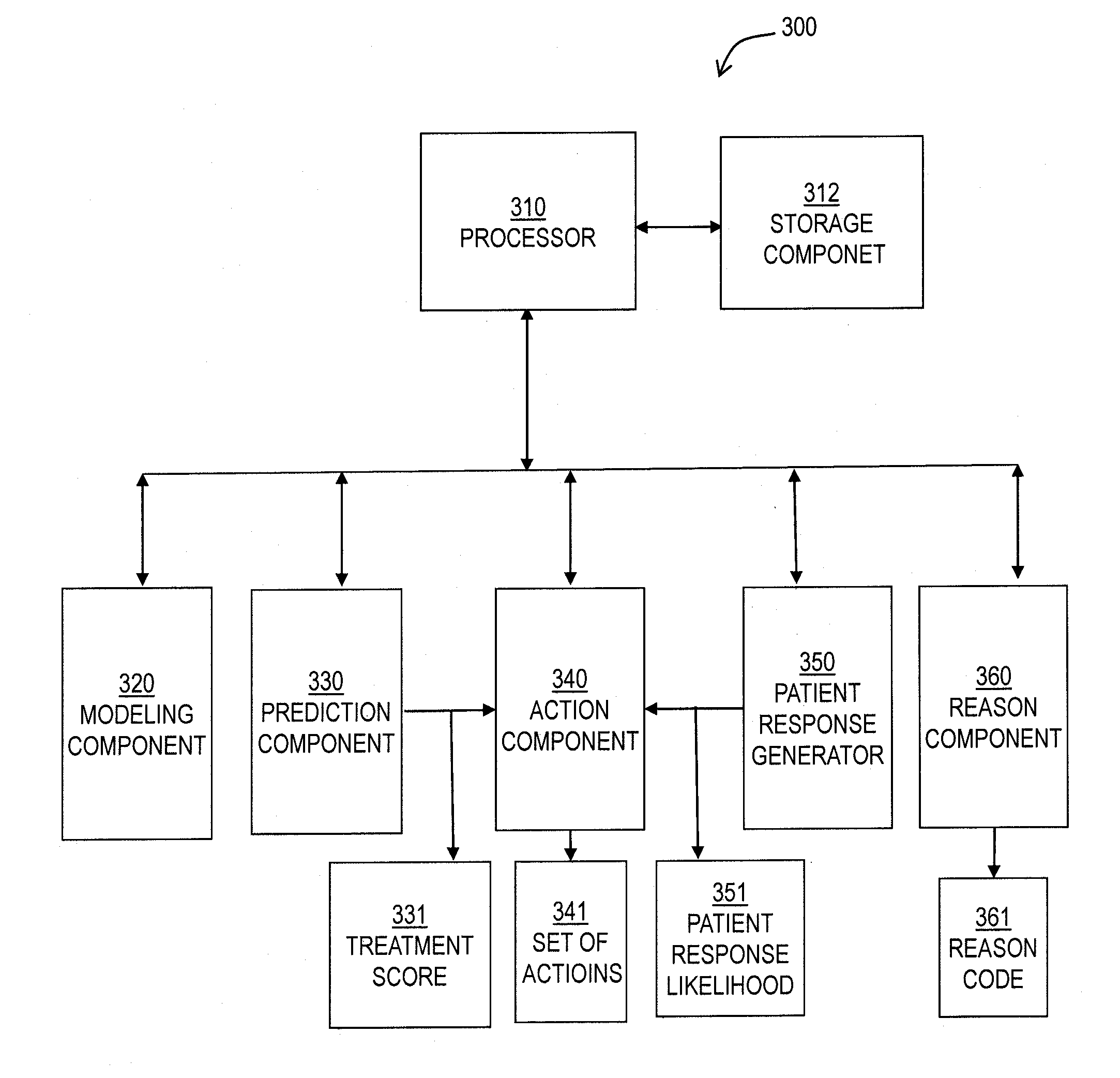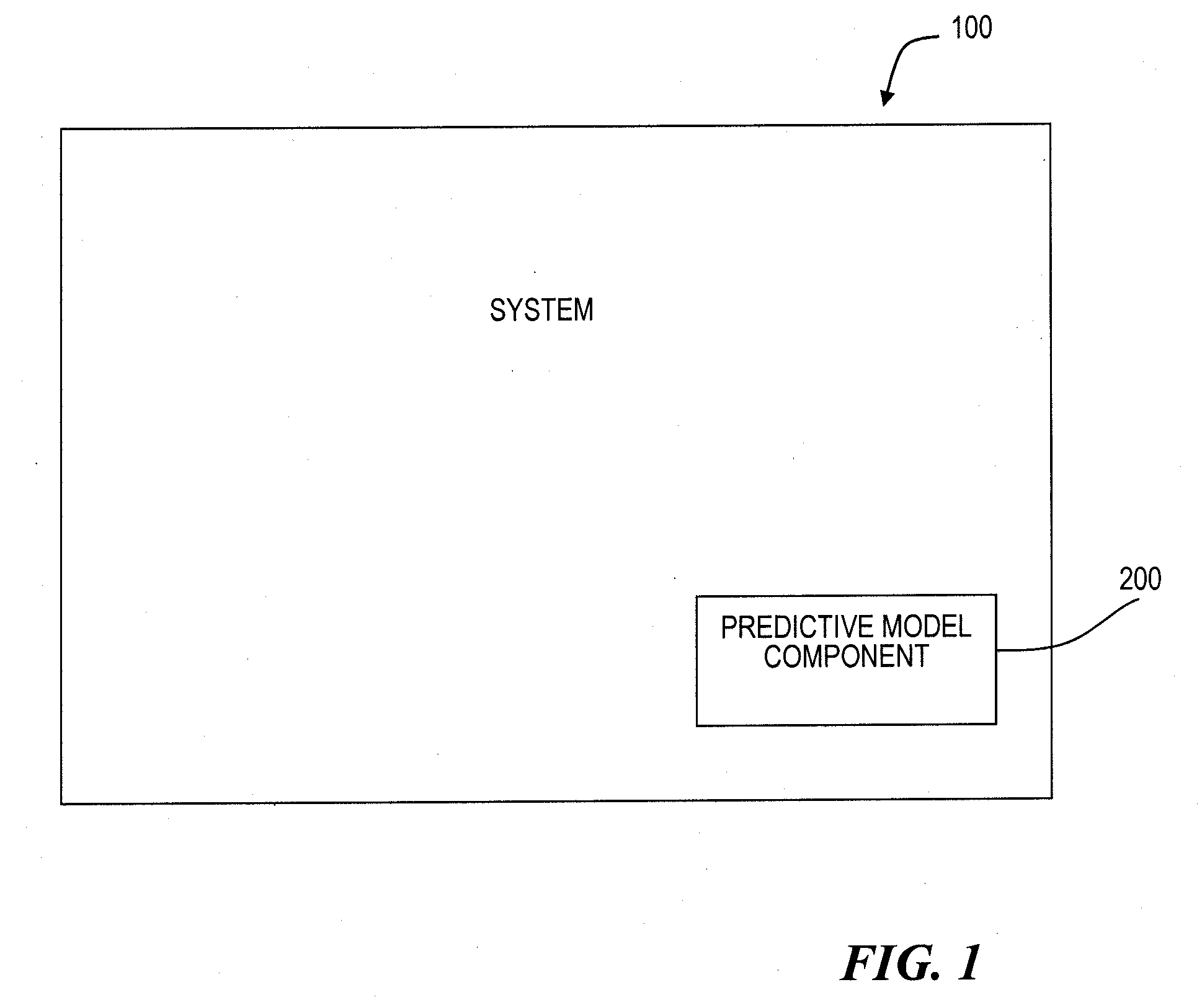Method and system for predicting adherence to a treatment
a technology of adherence and treatment, applied in the field of predicting medication adherence, can solve the problems of increasing the cost of providing medical care, the risk of patients and others not adhering to treatment plans or treatment regimens, and the health risk of patients, so as to promote the likelihood of data characterizing the determined likelihood of responsiveness
- Summary
- Abstract
- Description
- Claims
- Application Information
AI Technical Summary
Benefits of technology
Problems solved by technology
Method used
Image
Examples
Embodiment Construction
[0022]FIG. 1 is a block diagram of a system 100 that is used to determine or predict a person's potential adherence to a treatment plan, according to an example variation. The system 100 includes at least one predictive model component 200 for producing a model of the person's adherence to a treatment plan over time. The system 100 and the model component 200 can include one or more processors. The predictive model component 200 may include one or more processors. In some instances, the predictive model component 200 may include a portion of a processor.
[0023]FIG. 2 is a block diagram of an example modeling component 200 used as may be used in one or more variations of system 100. The modeling component 200 includes a learning component 220 and a predictive component 230. The learning component 220 processes historical data 210. The learning component determines and recognizes various patterns from the historical data 210. In this particular system, the historical data 210 is relate...
PUM
 Login to View More
Login to View More Abstract
Description
Claims
Application Information
 Login to View More
Login to View More - R&D
- Intellectual Property
- Life Sciences
- Materials
- Tech Scout
- Unparalleled Data Quality
- Higher Quality Content
- 60% Fewer Hallucinations
Browse by: Latest US Patents, China's latest patents, Technical Efficacy Thesaurus, Application Domain, Technology Topic, Popular Technical Reports.
© 2025 PatSnap. All rights reserved.Legal|Privacy policy|Modern Slavery Act Transparency Statement|Sitemap|About US| Contact US: help@patsnap.com



